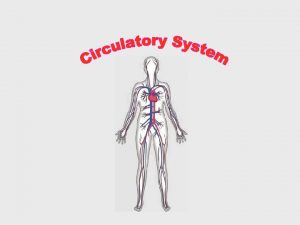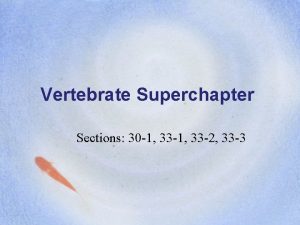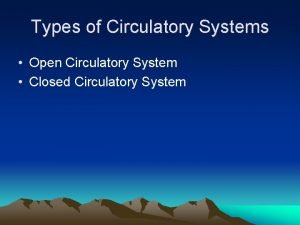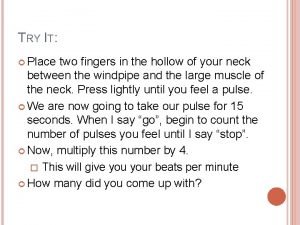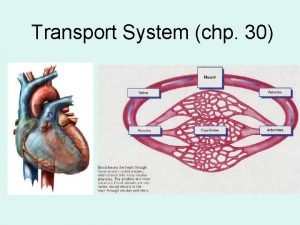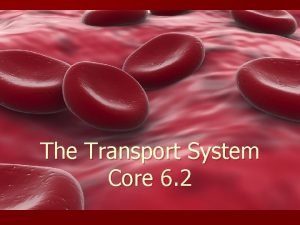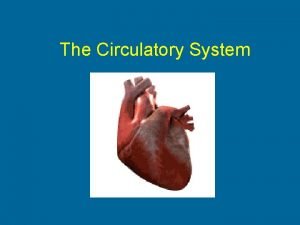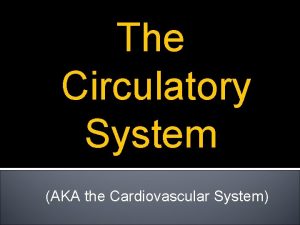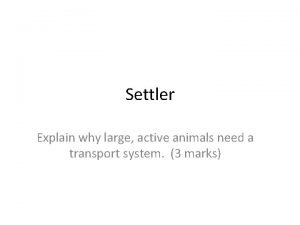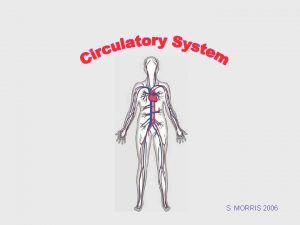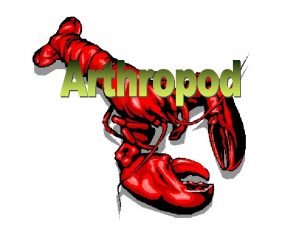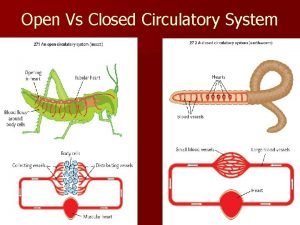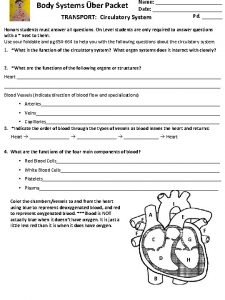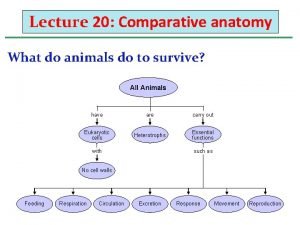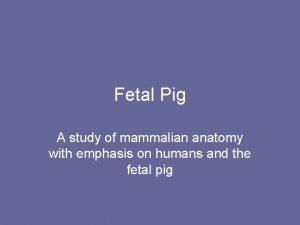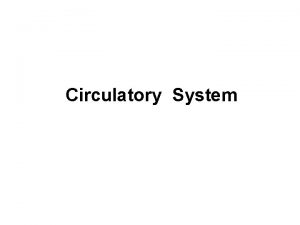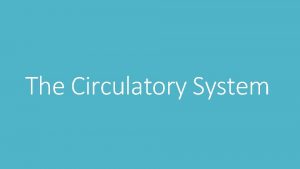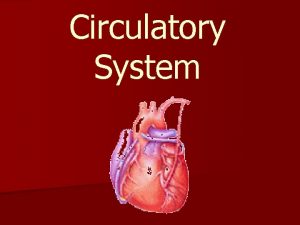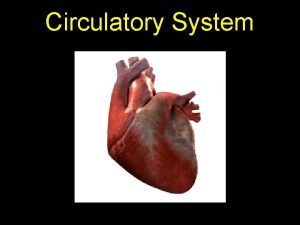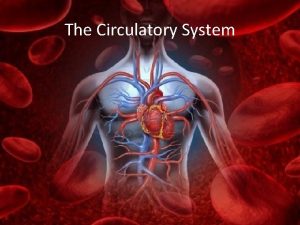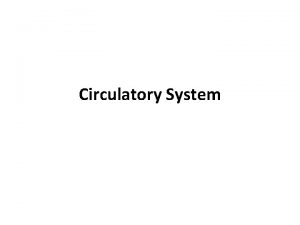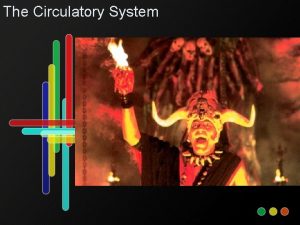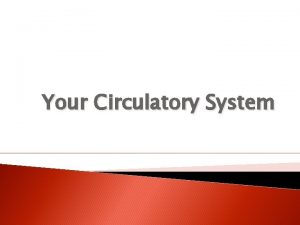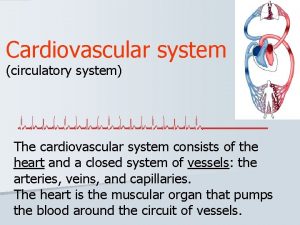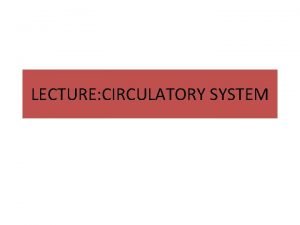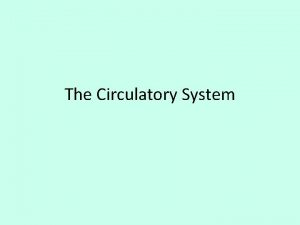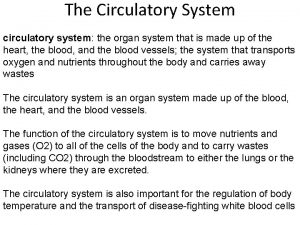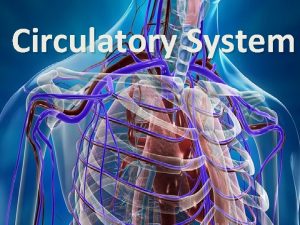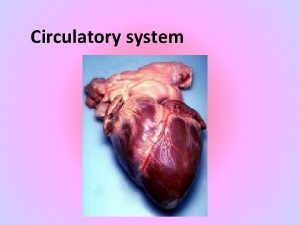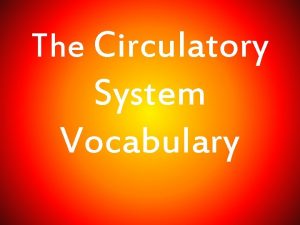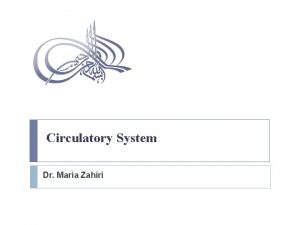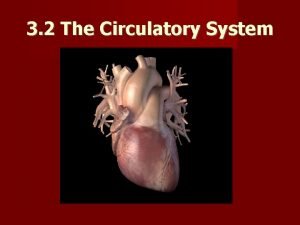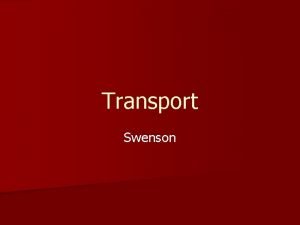THE CIRCULATORY SYSTEM THE CIRCULATORY SYSTEM Consists of






















- Slides: 22

THE CIRCULATORY SYSTEM

THE CIRCULATORY SYSTEM Consists of the heart, blood and blood vessels. It is responsible for transporting nutrients, gases, wastes, and other substances through the body.

THE CIRCULATORY SYSTEM Blood vessels transport blood to all organs in the body

HEART AND VESSELS The heart is made up of muscle cells that constantly contract and relax Contractions: pumps blood out of the heart Relax: blood from the rest of the body enters the heart.

HEART AND VESSELS Blood travels through your body in tiny tubes called vessels. Three main types of blood vessels

BLOOD VESSELS 1. Arteries – carry the blood away from your heart. Arteries are large and surrounded by muscle cells that help blood move through the vessels faster Blood is oxygen-rich and contains nutrients

BLOOD VESSELS 2. Veins – transport blood that contains CO 2 back to your heart

BLOOD VESSELS 3. Capillaries – are tiny vessels that enable oxygen, CO 2, and nutrients to move between your circulatory system and your entire body Found in the lungs and in the small intestine

BLOOD Parts of the blood: Plasma – liquid part of the blood. Contains nutrients, water and CO 2 Red Blood Cells – carry oxygen Platelets – helps the body heal when you get a cut White Blood Cells – help the body defend itself from toxins and diseases

BLOOD TYPES Type A Blood – people with A proteins on their red blood cells. Type B Blood – people with B proteins on their red blood cells.

BLOOD TYPE Type AB Blood – people that have both A and B proteins on their red blood cells Type O Blood – people that have neither A nor B proteins on the surfaces of their red blood cells

THE LYMPHATIC SYSTEM

THE LYMPHATIC SYSTEM Consists of the spleen, the thymus, bone marrow, and lymph nodes.

MAIN FUNCTIONS Three main functions: 1. Removing excess fluid around organs. 2. Producing white blood cells 3. Transporting fat

HOMEOSTASIS The lymphatic system helps your body maintain fluid homeostasis. About 65%of the human body is water Most water found in cells

LYMPH NODES Humans have more than 500 lymph nodes. Responsible for protecting the body by removing toxins, wastes, and other harmful substances.

LYMPHOCYTE A lymphocyte is a type of white blood cell that is made in the thymus, the spleen, or the bone marrow. Protects the body by traveling through the circulatory system and defending against infection.

IMMUNITY The resistance to specific pathogens, or diseasecausing agents, is called immunity. If the body is exposed to a pathogen, some immune cells remember and make proteins called antibodies.

TYPES OF DISEASES 1. Infectious Caused by pathogens, such as bacteria or viruses. Usually contagious Example: the flu

TYPES OF DISEASES 2. Noninfectious Caused by the environment or a genetic disorder (not a pathogen) Examples: skin cancer, diabetes Not contagious

LINES OF DEFENSE 1 st Line of Defense Skin and mucus prevent toxins and other substances from entering the body. 2 nd Line of Defense Immune response – white blood cells attach and destroy harmful substances

LINES OF DEFENSE 3 rd Line of Defense Protects your body against substances that have infected the body before. Immune cells make antibodies Vaccines help to make antibodies
 Circularory system
Circularory system Tiny air sacs at the end of the bronchioles
Tiny air sacs at the end of the bronchioles Circulatory system and respiratory system work together
Circulatory system and respiratory system work together Circulatory system steps in order
Circulatory system steps in order Superchp
Superchp Circulatory system of lungfish
Circulatory system of lungfish Clams open circulatory system
Clams open circulatory system Horse heart
Horse heart Function of the circulatory system
Function of the circulatory system Closed circulatory system
Closed circulatory system Circulatory system job
Circulatory system job 3 parts of the circulatory system
3 parts of the circulatory system Active animals
Active animals How circulatory system work
How circulatory system work What makes up the cardiovascular system
What makes up the cardiovascular system Gas exchange lungs
Gas exchange lungs Single circulation and double circulation
Single circulation and double circulation Phylum arthropoda characteristics
Phylum arthropoda characteristics Crustaceans characteristics
Crustaceans characteristics Open vs closed circulatory system
Open vs closed circulatory system Circulatory system foldable
Circulatory system foldable Invertebrate circulatory system
Invertebrate circulatory system Respiratory system fetal pig
Respiratory system fetal pig



